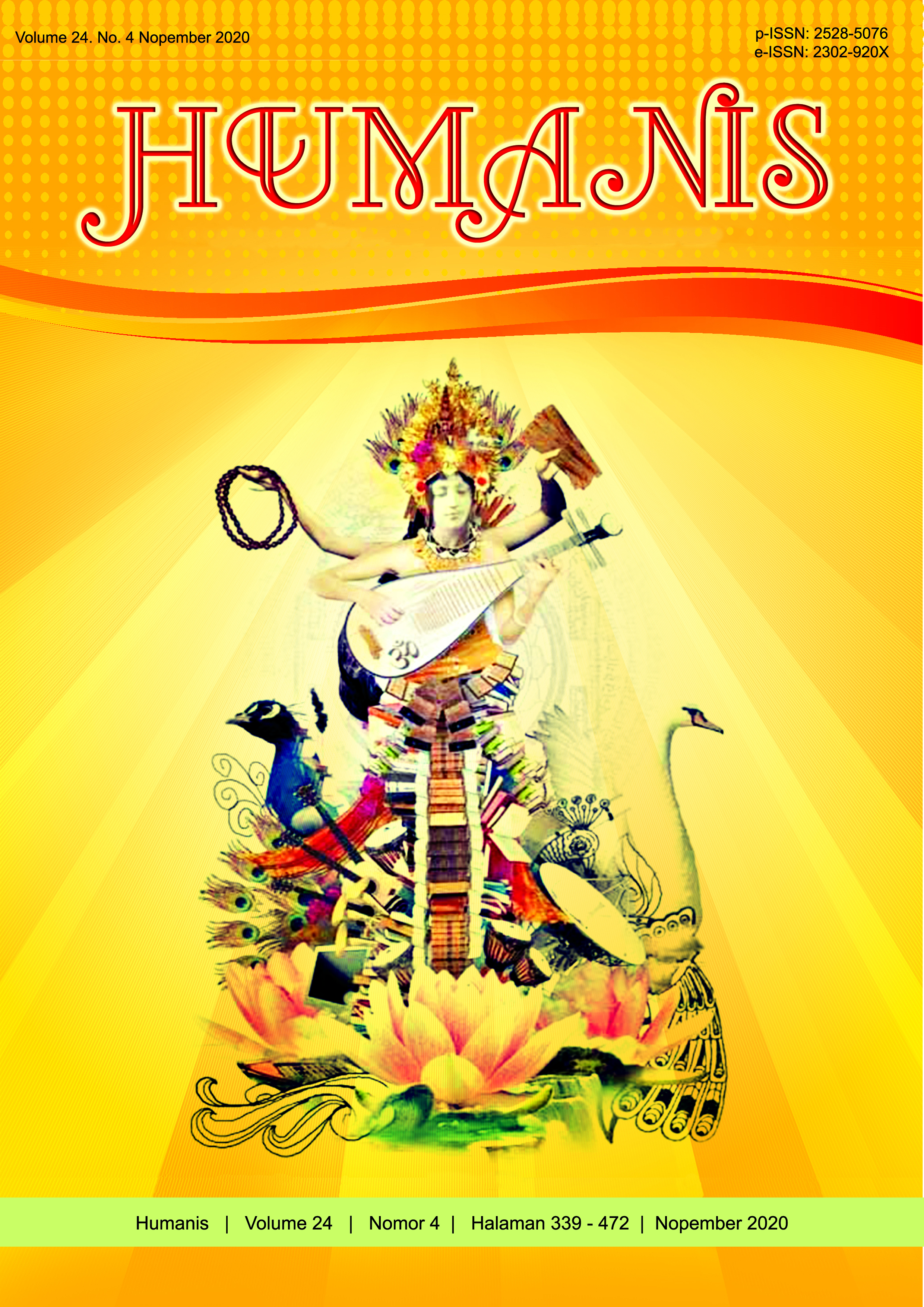Derivational Suffixes in Crazy Rich Asians Novel: A Morphological Analysis
Abstract
This study focused on the classification types and identifying the function of derivational suffixes. The data were taken from a novel entitled Crazy Rich Asians by Kevin Kwan. The collected data were analysed by using documentation method and qualitatively analyzed. The analysis was based on the theory of morphological study, particularly suffixes that is proposed by Plag (2002:109). Moreover, Merriam Webster dictionary is used in this study to analyse the word class of suffixes. The findings showed that there are four types of suffixes, such as: nominal suffixes, verbal suffixes, adjectival suffixes, adverbial suffixes. The function of the suffix can be divided into two, which is to class maintaining suffixes and class changing suffixes.
Downloads
References
Fleta, B.M. (2011). Suffixes in word-formation processes in scientific English. LSP Journal, Vol.2.2. 04-11.
Ford, M.A. Davis, M.H. Wilson, W.D. (2010). Derivational morphology and base morpheme frequency. Journal of Memory and Language, Vol.63.117-130
Herman. (2015). Suffixes Found In Narrative Writing At Grade Eight of SMP Methodist Pematangsiantar. IOSR Journal of Humanities and Social Science, Vol.20.4. 40-48.
Jayanti, N.S. (2016). The Derivational Adjectives in “The New York Times”. Journal of Arts and Humanities, Vol.16.2. 152-158.
Katamba, F. (1993). Modern Linguistic Morphology. London: Macmillan press.Ltd
Katamba, F. (1994). English word. London: Routledge.
Komang, A. (2017). Derivational and Inflectional Prefixes and Suffixes in Batudesa Dialect of Balinese: A Descriptive Study. International Journal of Language and Literature, Vo.1.1. 42-50
Mahendra, D. (2017). Derivational English Suffixes with Reference to the Jakarta Post. Humanis, Vol.19.1.45-51.
Manggala, A. (2018). Derivational Noun in the Economist Magazine “The Trump Presidency So Far”. Humanis, Vol.22.2. 447-452.
Muthmainnah, A. (2014). Teaching Derivational Suffixes to Improve the Vocabulary Mastery through Reading Text. English Language Teaching Society. Vol.2.1. 1-11
Nur, D.R and Ainul, K. (2016). An Analysis of Derivational Affixes in Commencemment Speech by Steve Jobs. Script Journal, Vol.1.1. 25-35.
Nurtidinni, D. Soraya, L. (2019). Morphological Suffixes in the Article of the Jakarta Post Online Newspaper. Professional Journal of English Education, Vol.2.2. 113-119.
Plag. Ingo. (2002). Word-Formation in English. Cambridge University Press.
Prasada, G. (2016). Derivational Suffixes in Bhagavad Gita. Humanis, Vol.16.3. 58 – 64.
Puspita, H. (2013). Derivational English Suffixes Forming Noun in the Novel "Can You Keep a Secret?" by Sophie Kensella. Humanis , Vol.4.2. 1-8.
Robinson, N. (2016). Word formation: the Description of the Nyakyusa Derivation and Inflection. International Journal of Language and Linguistics, Vol.3.5. 62-71.
Sari, Y. (2017). Derivational English Suffixes Forming Noun With Reference to Condé Nast Traveller UK e-Magazine. Humanis, Vol.18.2. 96-104
Utami, S. (2015). The Students Ability in using Derivational Suffixes in word formation. Jurnal Cemerlang. Vol.3.1. 19-27
Wulandari, A. (2014). A Morphologycal Analysis of Derivational Suffixes in Short Stories. Article Publication, Vol.3. 1-17.


















